CLICK ON IMAGES TO ENLARGE. REPEAT IF REQUIRED
Yesterday I featured a porcelain restoration class held at Fulbeck Hall.
http://www.visitoruk.com/Grantham/fulbeck-hall-C567-AT215.html tells us that
‘Fulbeck Hall is a fine country house dating from the early 17th-century, but largely rebuilt in 1733 by Francis Fane whose family had lived there since 1632.
The house, now a Grade II* listed building, was completely refurbished following World War II, by Henry and Dorothy Fane, having been left in a desperate state of repair by the army who had requisitioned it during the conflict.
The house, with 11 acres of formal gardens, has beeen restored back to its former glory and is now a private residence. It is not open to the public.
Visitors to the nearby Church of St. Nicholas will see monuments to the Fane family, residents of Fulbeck Hall for nearly 400 years.’
A more detailed history is provided by Wikipedia. From the following extracts I have deleted those sections in need of reference citations.
‘The hall was purchased, in 1622, by Francis Fane, 1st Earl of Westmorland, 8th Baron le Despenser and de jure 8th and 6th Baron Bergavenny, of Apethorpe Hall, Northamtonshire, from Sir George Manners, who remained in residence until he became the 7th Earl of Rutland in 1632.[11] The hall then went to the Earl of Westmorland‘s son, Sir Francis Fane,[11] a courtier, Royalist and commander of the King’s forces at Doncaster and Lincoln.
Under the Commonwealth, the estate was confiscated, however, Sir Francis Fane was allowed to buy it back, and before the Restoration of Charles II in 1660, he and his wife Elizabeth Darcy, daughter of Sir Edward Darcy MP, grandson of the executed traitor Thomas Darcy, 1st Baron Darcy de Darcy, occupied much of their time in rebuilding the Hall in Restoration style. It was burned down 30 December 1731,[11] and was rebuilt 1732-1733. His son, also Sir Francis, married Hannah Rushworth daughter of John Rushworth MP and private secretary to Oliver Cromwell .
In 1767 Fulbeck Hall was left to Henry Fane of Brympton owner of Brympton d’Evercy who was a grandson of Sir Francis Fane, the second of Fulbeck and Hannah Rushworth. Henry Fane of Brymton made a fortune as a successful Bristol privateer and he left his Wormesley estates in Oxfordshire to his younger son Henry and his estates in Somerset, Dorset, and Lincolnshire were left to his eldest son Thomas Fane, 8th Earl of Westmorland Thomas, 8th earl inherited the estates of his father and his cousin the 7th Earl making him one of the richest landowners in England. He left Fulbeck Hall to his younger son the Hon Henry Fane MP in 1783. (This man) followed a long list of Fanes as Members of Parliament for Lyme Regis the famil[y’]s pocket borough inherited from an uncle, John Scrope MP, Secretary to the Treasury and grandson of the executed regicide Colonel Adrian Scrope. The constituency at times provided the Fanes with two members of parliament at the same time and between 1753 and 1832 twelve separate members of the family represented Lyme Regis in the Tory interest. Throughout this period the Fane family also represented Constituencies in Somerset, Lincolnshire, Kent, Hampshire, Northamptonshire and Oxfordshire. In 1777 Henry Fane married Anne Buckley Batson, heiress of the Avon Tyrrell estate in Hampshire, by whom he had 14 children.
During the 19th century the house was home to General Sir Henry Fane MP for Lyme Regis who was Commander-in-Chief, India as well as his brother General Mildmay Fane. Sir Henry bequeathed a life interest in the estate to his eldest son Col. Henry Fane(d.1836).[12] His nephew General Walter Fane who raised Fane’s Horse a regiment of volunteers to fight in China during the Second Opium War succeeded him at Fulbeck Hall. This regiment still exists as part of Pakistan’s armed forces. General Walter Fane is not to be confused with his brother Colonel Francis Fane of Fulbeck Manor, who raised the Peshawar Light Horse in 1857 as an irregular cavalry unit to fight against the mutineers during the Indian Mutiny. This regiment was disbanded in 1903.
During the Second World War 1939-1945 the house was requisitioned by the British Armed Forces and it was the location of the 1st Airborne Division before they left the United Kingdom for the Battle of Arnhem.
Many of the contents of Fulbeck Hall were sold by Sotheby’s in October 2002.’
Soon after the porcelain restoration event, in February 1993, I returned to make photographs to feature in a brochure for Mary Fry, the then owner. Today I scanned a selection of the prints.
Here Mary stands at her open door
leading to the entrance hall,
off which is found the reception room.
A sundial can be seen standing before the main door in the initial picture. The avenue drive leads the eye from this to the gates.
The elegant drawing room is beautifully furnished with fine furniture, ornaments, paintings,
and a grand piano.
Here is one corner of the room.
My accompanying text is written in the present tense, as in 1993, but I have no idea whether this vase, seen beneath the mirror above;
this painting; or any of the other contents in my pictures, survived the sale of 2002.
This evening we dined on Jackie’s succulent sausage casserole, perfect roast potatoes, and crisp cauliflower. I drank more of the malbec.
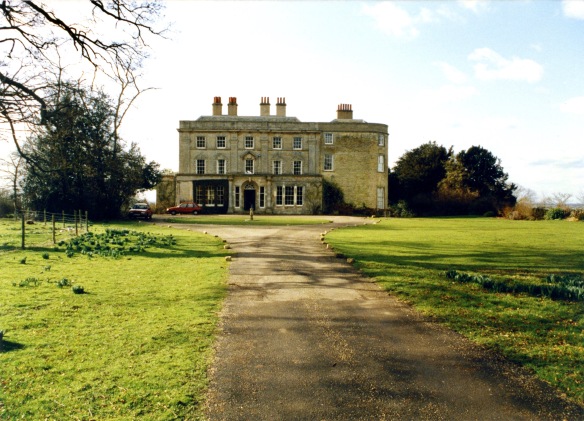



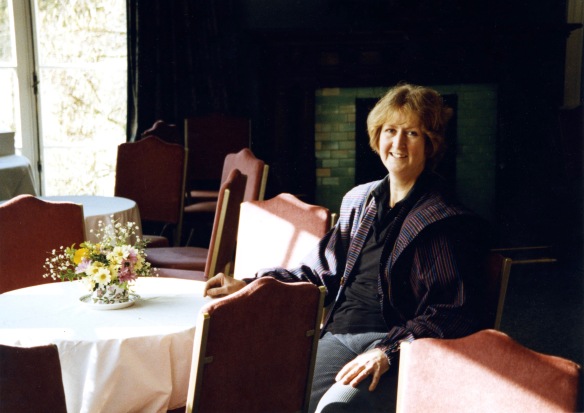
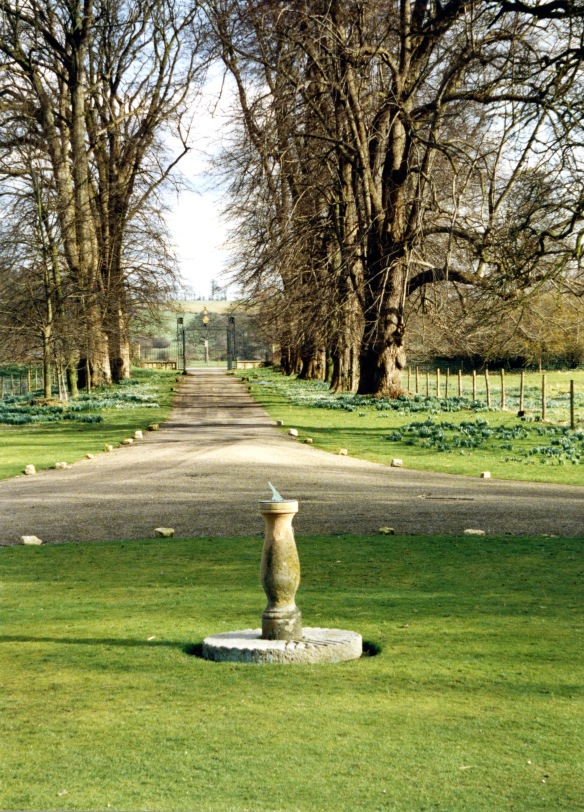




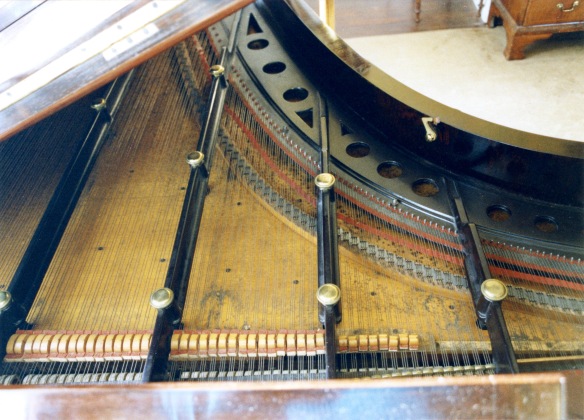

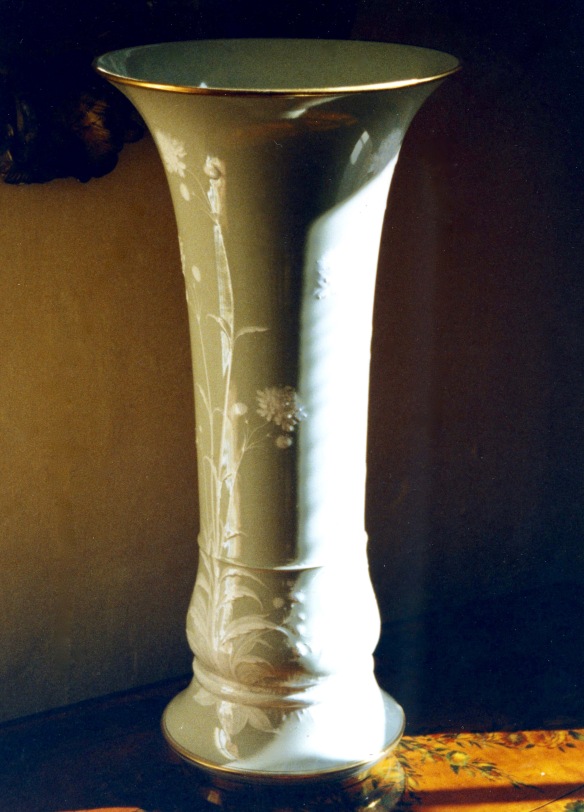

The army did dreadful damage to some houses. Around half a dozen had to be demolished. It’s excellent that this one was pulled back from the brink.
Thanks very much, John
It was interesting to read about the intrigue around the Commonwealth and Restoration, and then all the subsequent rebuilding and restoration. Great photos of the objects that may or may not still be there.
Many thanks for such close reading and comments. Merril
Love exploring such historic homes. That is a gorgeous grand piano. Reminds me of the one I was kindly invited to try at Mottisfont.
Many thanks, Leslie
Beautiful detail in the mirror frame and ceiling moulding. And that driveway looks very much like our southern plantations. Such history with this building.
Many thanks, Van
I Fane would live there.
Loud chortles. Many thanks, Bruce
Ah, Derrick, I could do with your eye and photographic skill at my various visits; wonderful!
Many thanks, Mike. When will you next be down this way?
No plans at the moment – I still have a backlog from trips to Dorset, Pompey and the Isle of Wight!
Maybe one day, then 🙂
Your indoor photography is especially well done. I find it interesting to see Mary in her casual modern attire in the rooms that were so formally furnished.
Such a large house to be a private residence! I wonder how many people live there.
I don’t know how many now, but Mary lived there with her husband until she died in 2000. That was the reason for the sale of 400 years of family treasures. Many thanks, Nicki
Very interesting post and photos, Derrick. You would make an excellent history teacher. 🙂
Very many thanks, Jill. It was one of my specialist subjects 🙂
What a beautiful place!
Many thanks, Leslie
You live in such a lovely land with such remarkable old castles and houses and gardens and such. 🙂 <3
We are so lucky, Natalie. Many thanks
You’re welcome Derrick! ?❤️
The place is stunning! So wonderful that you have all these photos, and have put your finger on it in time and preserved the moment. Loved the history too. My eye caught the sundial right away. I’ve always been enchanted by sundials.
Very many thanks, Crystal
Your photographs are lovely! The house is such an elegant building and so well proportioned. Such a shame that there had to be a house sale!
Thanks, Clare. I agree. Unfortunately Mary died in 2000. 400 years of family treasures brought in millions.
Oh how sad!
Yes
Far from the madding crowd and pulled out of the clutches of the army, the house has managed to freeze its grandeur and splendour as if in a time warp. The photographs are as exquisite as the subject they represent.
Very many thanks, Uma.
Lovely
Many thanks, Lynn
A beautiful home…
It certainly is, Osyth. Many thanks
It looks grand. Your photos are lovely as always.
Many thanks, Arlene
I’m fascinated by how many of these great houses sit open to the wind and weather, without any kind of stand of trees to break it or provide shelter. What a beautiful place, though, inside and out.
Many thanks, Lisa. They were built to last
When I first visited England in the late 1950s, I was impressed with the countless old, restored houses and castles I saw. Coming from Canada, where we are ‘the new world’, the amount of ‘stuff’ in these homes fascinated me. I admired it all! I’ve since developed a ‘less is more’ decorating style, and wouldn’t know what to do with all of those items. The dusting alone would be exhausting!
400 years’ worth of family treasures were also stacked in that house. Thank you, Diane
Ohh nice post
Thank you, asefimtiaj
What a lovely home. The piece de resistance was that grand piano!
One of the pictures fetched £500,000. Thanks a lot, GP
Wow, Derrick. What a remarkable place. I wonder how anyone keeps up with such a large country home.
Apparently it is becoming more and more difficult, Cynthia. Many thanks
After all that I thought you’d have at least dined on pheasant under glass………………..
🙂 Thanks for that, Brian
By cataloguing and sharing the gorgeous contents of Mary’s house, I feel you have helped to preserve its history for all posterity, Derrick. Nicely illustrated with beautiful photos and descriptions. ?
Very many thanks, Robin. Had I known how much of 400 years was stacked away in there I would have done a great deal more.
Oh, yes! Sometimes I have regretted not doing a complete tour of photos, also enjoyed all the history you shared here.
🙂
That’s very true!
It was quite a surprise to come across this cache of photographs- and Mary in them! It brought back to life a lovely, and very lived- in house.
Almost all the contents were sadly dispersed at the Sotheby’s sale, though I did manage to buy a couple of pieces as momentoes.
Most of all, I remember the fun I had rummaging through the attics to find pieces to furnish and decorate a bedroom suite for Mary…. and it was quite a surprise to see the finished room featured in the Sotheby’s sale catalogue as one of Fulbeck Hall’s main interiors!
I am rarely on blogs but wanted to let you know this! I had 7 years of blogging, “retired” from a 50 hour job and my blog in 9/18. If you want to follow me to FB, I am there as Robin O. Cochran (Delaware, Ohio). Take care, this was so fascinating! ⭐?
What a lovely estate!
Thanks very much, Geetha
Most welcome Derrick 🙂
It is certainly a very fine house, but I often wonder just where the wealth came from that allowed some old families to accumulate so much and at what cost. I know that in Australia some of our wealthy dynasties came upon wealth through fair means and foul.
Good question, Paol. Many thanks
Yes, they were built to last! A wonderful tour and beautiful photos, Derrick. Thank you for taking readers along!
Many thanks, Lavinia
Excellent photographs and very interesting history. They lived through some turbulent times.
I wish I’d known more at the time. Thanks a lot, Quercus
🙂